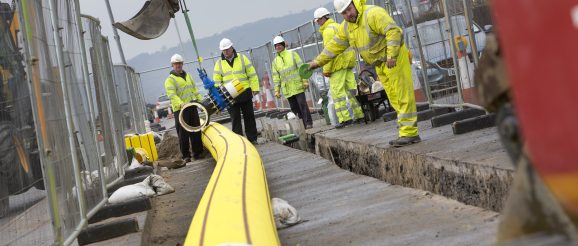Hydrogen innovation set to drive 17,000 green jobs in Britain’s industrial heartlands – Energy Networks Association (ENA)

Notes to editors
North East Network and Industrial Cluster Development
Planned network investment: £2,098,053,000
Estimated direct jobs created: 4,261
Estimated supply chain jobs created: 3,499
Scotland’s north-east and central belt are home to some of its largest industrial carbon emitters. The sector’s reliance on natural gas means that it emits 11.9Mt of CO2 emissions per year: the equivalent of 2.6 million cars, or roughly all the cars in Scotland.
SGN’s North-East Network and Industrial Cluster project is laying the foundations for the rapid decarbonisation of this high-emitting sector, proposing to demonstrate the feasibility of a 100% renewable hydrogen energy system that will repurpose the existing gas network to reduce those emissions.
East Coast Hydrogen
Planned network investment: £262,000,000
Estimated direct jobs created: 545
Estimated supply chain jobs created: 492
East Coast Hydrogen is a collaboration between Cadent, Northern Gas Networks and National Grid covering a footprint that includes the North East and East Midlands regions. It’s a project that is seeking to create a hydrogen network with as little cost as possible by re-purposing existing pipeline assets and building new pipelines only if needed. It is anticipated that this network will build out from the planned hydrogen production clusters in the Humber region, Teesside and the East Midlands – complementing and building on the existing plans of the hydrogen cluster consortia.
The aim is to be ready to transport hydrogen to where it is needed for decarbonising heavy industry, heating, power generation and transport. Connection of the Humber and Teesside clusters, and hydrogen storage, would then be followed by connection to HyNet North West and other hydrogen production clusters in Cumbria and East Anglia.
Hynet Homes
Planned network investment: £810,500,000
Estimated direct jobs created: 1,782
Estimated supply chain jobs created: 1,627
The project is part of the HyNet North West Industrial Cluster proposals for the development of consumer trials, centred around the potential HyNet hydrogen production facility located on the Stanlow oil refinery in Runcorn. There are a number of possible trial locations around the towns and villages surrounding the refinery which may be suitable for being put forward as the Hydrogen Village, to be in operation by 2025 in line with the UK Government’s Ten Point Plan for a Green Industrial Revolution. The Hydrogen Village trial will demonstrate the scalability of hydrogen conversion and provide a blueprint for similar regional and national trials.
LTS Futures
Planned network investment £20,000,000
Estimated direct jobs created: 74
Estimated supply chain jobs created: 31
Projects focused on testing both the Local Transmission System (LTS) and the National Transmission System (NTS) will help ensure efficient transportation of hydrogen around the country, to homes and businesses across the UK.
The LTS forms the backbone of the wider energy network, ensuring the reliability and accessibility of more local gas distribution to towns and cities around the country. The LTS Futures project, therefore, is essential in ensuring the updates to existing infrastructure to make the switch from natural gas to hydrogen. Initial research into the existing infrastructure highlighted that 91% of the existing SGN pipeline network will most likely be suitable for the switch to hydrogen. As the project develops, greater investigations, including a live trial, will be made to ensure the suitability of the entire existing infrastructure in delivering hydrogen safely and securely.
Future Billing Methodology
Planned network investment: £4,800,000
The Future Billing Methodology project explores options for a fair and equitable billing methodology that will be suitable for a lower-carbon future. The current system, Flow Weighted Average Calorific Value (CV) billing regime, has the potential to restrict entry to unconventional gases that comply with Gas Safety (Management) Regulations GS(M)R. As well as this, the current system would require expensive processing to match the CV of the primary inputs. The project looks to understand how diverse gas sources can be integrated into the current system by exploring options for assigning CV at more specific levels and, with the findings, will inform the industry on billing options for the future hydrogen economy.
